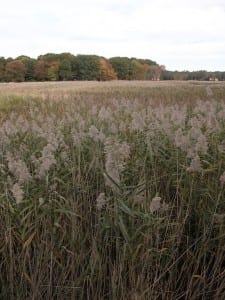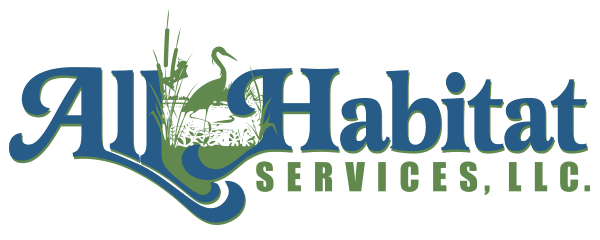All Habitat Services, LLC specializes in aquatic and terrestrial vegetation management including invasive and nuisance species control and native species restoration.
Invasive Species
Invasive species are non-native plants that are disruptive in a way that causes human health, environmental or economic harm. In minimally-managed areas, invasive plants crowd out native plants and alter the way flora, fauna, soil, and water interact within native ecosystems.
Invasive species lack the natural controls (predators/diseases) on growth and reproduction that would be found where the invader is native. They also have the ability to establish new plants and grow rapidly under a wide variety of site conditions, have a high reproductive rate, and have the ability to disperse wide distances, which makes them tough to control. Some of the most common species found in our area are:
- Asiatic Bittersweet (Celastrus orbiculatus)


- Autumn Olive (Elaeagnus umbellata)
- Bamboo (Phyllostachys spp.)
- Common Reed (Phragmites australis)
- Garlic Mustard (Alliaria petiolata)
- Honeysuckles (Lonicera spp.)
- Japanese Barberry (Berberis thunbergii)
- Japanese Knotweed (Polygonum cuspidatum)
- Japanese Stiltgrass (Microstegium vimineum)
- Mile – a – Minute (Polygonum perfoliatum )
- Multi-flora Rose (Rosa multiflora)
- Norway Maple (Acer platinoides)
- Porcelainberry (Ampelopsis brevipedunculata)
- Privet (Ligustrum spp.)
- Purple Loosestrife (Lythrum salicaria)
- Tree of Heaven (Ailanthus altissima)
- Wineberry (Rubus phoenicolasius)
- Winged Euonymous (Euonymus alatus)
All Habitat Services’ years of experience have helped us determine the best methods for controlling the invasive species found in our local ecosystems. The techniques used, have been developed to reduce non-target impacts through selectivity, timing, and application method.
Typically, a combination of chemical and mechanical methods provides the most effective control of the target species. All of our employees are licensed pesticide applicators and have been extensively trained on the proper use and handling of all the chemicals and equipment we use.
Native Species Restoration
Normally, after invasive species removal or other ecosystem-altering activities, native vegetation will come back and reoccupy the habitat being restored. Occasionally, however, the native seed bank has been depleted or altered enough to require some human assistance.
All Habitat Services customizes planting plans based on habitat properties, soil quality, and customer desires to meet the specific needs of each restoration site. We use only native species to ensure and promote healthy habitat recovery and successful re-growth.
